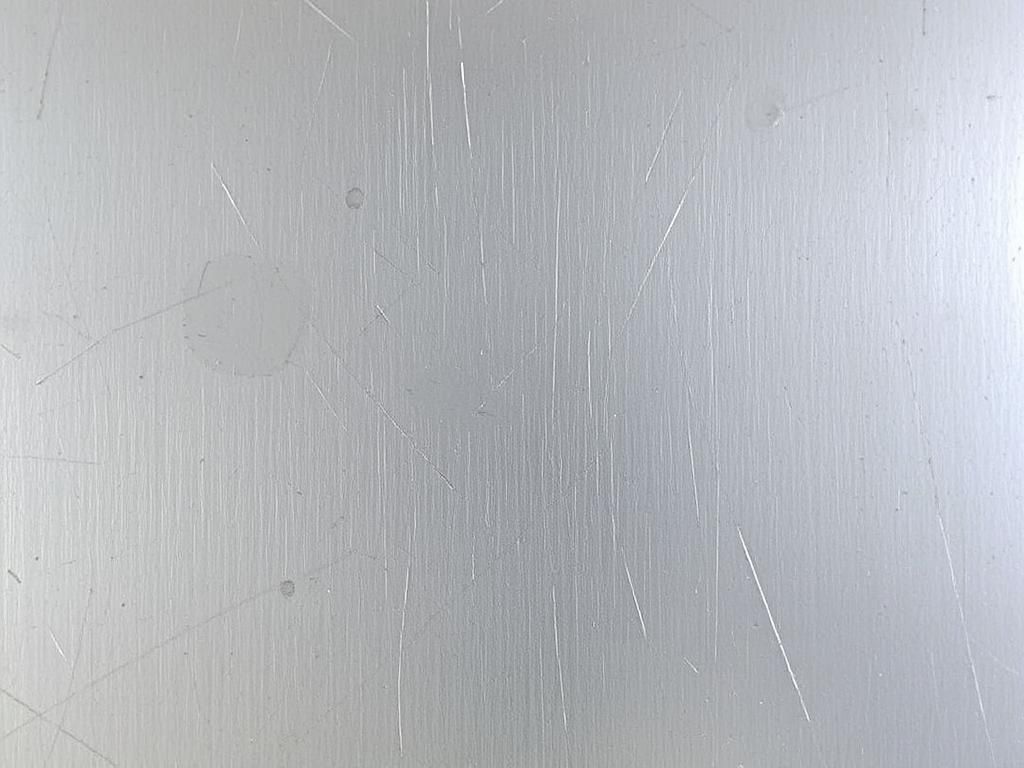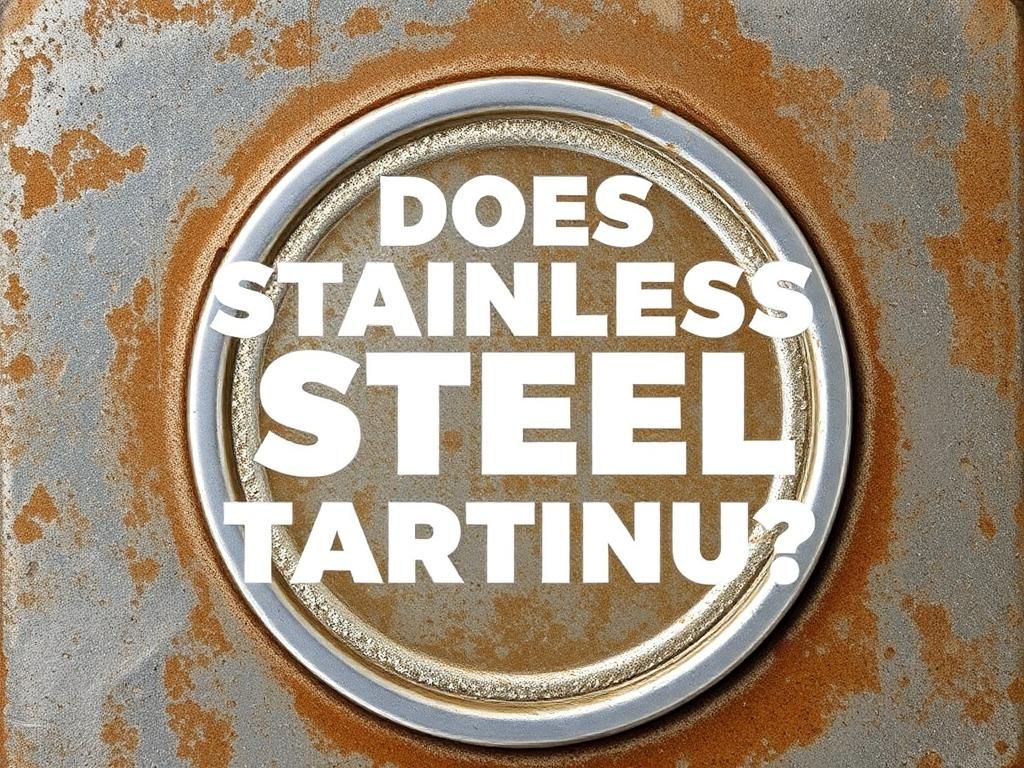Definition of Stainless Steel
Stainless steel is a type of alloy that is well-known for its resistance to corrosion and tarnishing. It primarily consists of iron, carbon, and a minimum of 10.5% chromium, which gives it its unique properties. Additionally, other elements such as nickel and molybdenum may be included to enhance its characteristics. The various types of stainless steel can be categorized based on their microstructure, including austenitic, ferritic, and martensitic types, each with unique properties and applications.
Purpose of the Article
The purpose of this article is to clarify common misconceptions about whether stainless steel tarnishes and to provide detailed information on the maintenance and care of stainless steel products to preserve their appearance over time.
Understanding Tarnish
What is Tarnish?
Tarnish is defined as a thin layer of corrosion that forms on the surface of certain metals, dulling their shiny appearance. This chemical process often results from exposure to air and moisture, leading to various aesthetic discolorations. It’s important to distinguish tarnish from corrosion and rust. Corrosion is a broader term that refers to the deterioration of materials due to environmental reactions, while rust specifically refers to the corrosion of iron and its alloys, characterized by the formation of iron oxide.
Common Materials that Tarnish
Tarnishing is commonly observed in metals such as silver, copper, and brass, which react with sulfur compounds in the air and other corrosive elements. The difference in why some metals tarnish while others do not relates to their chemical compositions and surface properties. For instance, while copper and silver readily tarnish due to their reactivity, titanium and stainless steel are much less prone to these transformations.
Characteristics of Stainless Steel
Alloy Composition
The key elements that constitute stainless steel include chromium, nickel, and carbon. The chromium content is essential as it forms a passive layer of chromium oxide on the surface which prevents further oxidation and rusting. Nickel adds toughness and ductility, enhancing the overall strength of the alloy.
Corrosion Resistance
The presence of chromium is crucial as it creates a protective layer that shields the underlying metal from exposure to air and corrosive elements. This unique ability is what generally makes stainless steel resistant to tarnishing. However, it is not entirely immune; under certain conditions, tarnishing can still occur.
Varieties of Stainless Steel and Their Properties
There are three primary types of stainless steel:
1. **Austenitic Stainless Steel** – Known for its high corrosion resistance and excellent formability, it contains high levels of chromium and nickel. Commonly used in kitchenware and chemical processing equipment.
2. **Ferritic Stainless Steel** – Contains less chromium and nickel, offering good corrosion resistance but lower ductility. This variety is often used in automotive applications.

3. **Martensitic Stainless Steel** – This type contains higher carbon and provides good hardness and strength but lower corrosion resistance. It is typically used for cutlery and surgical instruments.
Can Stainless Steel Tarnish?
Conditions that May Lead to Tarnishing
Yes, stainless steel can tarnish under specific conditions, particularly when exposed to high humidity levels, air pollutants, and certain chemicals. Environmental factors such as chlorides (found in saltwater), acids, and other corrosive substances can compromise the protective layer of chromium and allow tarnishing to occur.
Signs of Tarnishing on Stainless Steel
Tarnishing on stainless steel may present as discoloration, which can appear as darkening or blotches on the surface. Additionally, changes in surface texture, like roughness or pitting, may indicate that tarnishing is taking place.
Maintenance and Care of Stainless Steel
Regular Cleaning Tips
To avoid tarnishing and maintain the shine of stainless steel, regular cleaning is essential. Use mild soaps and warm water along with a soft cloth to clean the surface. Vinegar can also be an effective cleaning agent, but it should be rinsed off thoroughly. Avoid using harsh chemicals like bleaches and abrasive cleaners, as these can damage the protective layer.
Preventing Tarnish and Damage
To prevent tarnish, proper storage is key. Keeping stainless steel items away from moisture can significantly reduce the chances of tarnishing. Also, avoid contact with corrosive materials, which can compromise the protective layer of chromium.
Restoration Techniques
If tarnish develops, polishing methods can restore stainless steel’s original appearance. Use products specifically designed for stainless steel restoration, and ensure that you follow the manufacturer’s instructions for best results.
Myths and Misconceptions

Common Beliefs About Tarnishing
A common myth is that stainless steel is impervious to tarnishing. While stainless steel is highly resistant, it is not completely free from tarnishing under adverse conditions. Additionally, some believe that any discoloration indicates inferior quality, which is not necessarily true; proper care can keep even lower-quality stainless steel looking good.
Facts vs. Fiction
Understanding the limitations of stainless steel is essential. While it is designed to resist tarnishing and corrosion, environmental and chemical factors can lead to tarnishing. Proper maintenance is critical to ensure longevity and appearance.
Conclusion
Summary of Key Points
In summary, while stainless steel is resilient and resistant to tarnishing, it is not entirely immune. Regular care and maintenance are crucial to maintaining its appearance and durability.
Final Thoughts on Stainless Steel Care
It is essential to monitor stainless steel items for signs of tarnishing and to take care to clean and store them correctly to preserve their condition over time.
Additional Resources
Suggested Readings
For further information, consider exploring articles on materials science or guides on metal care to gain deeper insights into maintaining metal products.
Frequently Asked Questions (FAQs)
- Does all stainless steel tarnish? – No, different grades of stainless steel have varying resistance to tarnishing, with some being more prone to it than others.
- What causes stainless steel to become discolored? – Environmental factors like humidity and exposure to chemicals can cause discoloration.
- Is there a way to polish tarnished stainless steel? – Yes, using specially formulated stainless steel cleaner and a soft cloth can help restore its shine.
- How often should I clean my stainless steel items? – Regular cleaning, at least monthly, helps prevent tarnishing and maintains shine.
- What’s the best way to store stainless steel items? – Keep them in a dry place away from moisture and chemical exposure.
- Can I use regular cleaning products on stainless steel? – It is best to use mild soaps or cleaners specifically designed for stainless steel.
- What is the difference between tarnishing and scratching? – Tarnishing affects the surface’s color and luster, whereas scratching refers to physical damage to the metal surface.
- Does stainless steel rust? – While stainless steel is resistant to rusting, it can rust under extreme conditions or when the protective layer is compromised.
- How does the alloy composition affect tarnish resistance? – Higher chromium content increases resistance against tarnishing and corrosion.
- Are there any preventive products for rust or tarnish? – Yes, specific protective coatings can be applied to enhance resistance against tarnishing.
Summary Table
| Type of Stainless Steel | Composition | Common Applications | Corrosion Resistance |
|---|---|---|---|
| Austenitic | High chromium and nickel | Kitchenware, Chemical processing | High |
| Ferritic | Moderate chromium, low nickel | Automotive, Structural applications | Moderate |
| Martensitic | High carbon | Cutlery, Surgical instruments | Lower |
Using this information, you can gain a comprehensive understanding of whether stainless steel tarnishes and how to maintain its appearance and functionality over time.
